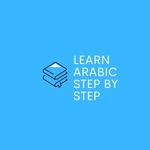Durus al-Lughah Book 1 Lesson 1: hadha, ism istifham maa, and man
Start from today, we are going to learn one of the recommended book to learn Arabic, Durus al-lughah al-Arabiyyah.
The complete name of the book is durusul lughah al-arabiyyah lighayri an-natiqiina biha (دروس اللغة العربيّة لغير الناطقين بها), by Dr. V. Abdur Rahim.
This book has four volumes, and we start from durus al-lughah volume one or book 1.
Our method to learn this book: First of all, we see and read carefully the text in the picture, then we can learn the basic Arabic concept from the text (the things that we learn are marked), and finally we learn Arabic vocabularies (the Arabic words that are mentioned in the lesson).
===note (تنبيه )===
You can browse the Arabic lesson from the following links:
===note (تنبيه )===
Now, we start from lesson one. In this lesson, we are going to learn:
1. Singular masculine noun (اسم مفرد مذكّر).
2. Demonstrative pronoun to singular masculine noun (هذا).
3. Question word “what” in Arabic (ما).
4. Question word “who” in Arabic (من).
5. Arabic vocabulary in lesson one.
Ok, let's start learning from step one.
This (هَذَا)
(اسم إشارة للمفرد المذكّر القريب العاقل وغير العاقل)
2. In the picture, we can see the examples of singular and masculine noun. They are:
a. a house (بَيْتٌ)
b. a mosque (مسْجِدٌ)
c. a door (بَابٌ)
d. a book (كِتَابٌ)
e. a pen (قَلَمٌ)
f. a key (مِفْتَاحٌ)
g. a table (مَكْتَبٌ)
h. a bed (سَرِيْرٌ)
i. a chair (كُرْسِيٌّ)
3. We can notice that there is the n-sound (tanwiin) at the end of the nouns above.
In Arabic, the tanwiin at the end of the word indicates that the word is an indefinite noun. Therefore, we translate it with indefinite article “a or an”, such as This is a book, etc.
What is this? (مَا هَذَا؟)
Maa is the question word for non-human.
The meaning in English is “what”.
2. Particle hamzah (أ) or hamzah istifham is placed at the beginning of a sentence, this particle turns the sentence into a question.
We use “أ” for yes/no question. Therefore, the answer is yes (نَعَمْ) or no (لاَ).
— What is Arabic yes and no?
Answer:
yes = نَعَمْ (na'am)
no = لاَ (la)
3. The examples of interrogative sentence:
a. Question = مَا هَذَا؟ (What is this?)
b. Question = أَهَذَا مِفْتَاحٌ؟ (Is this a key?)
Answer = نَعَمْ, هَذَا مِفْتَاحٌ (Yes, this is a key)
or لاَ, هَذَا قَلَمٌ (No, this is a pen).
Who is this? (مَنْ هَذَا؟)
2. Hamzah istifham (أ) is placed at the beginning of a sentence, and is used for both human and non-human.
Hamzah istifham is used for yes/no question.
3. hadha (هَذَا) is a demonstrative pronoun which is used for both human and non-human.
4. Question word maa and man.
Examples question and answer:
What is this? = مَنْ هَذَا؟
This is a pen = هَذَا قَلَمٌ
Who is this? = مَنْ هَذَا؟
This is a boy = هَذَا وَلَدٌ
Arabic vocabularies (mufradat) that are mentioned in this chapter
b. وَلَدٌ = a boy
c. طَالِبٌ = a student
d. رَجُلٌ = a man
e. تَاجِرٌ = a merchant
f. كَلْبٌ = a dog
g. قِطٌّ = a cat
h. حِمَارٌ = a donkey
i. حِصَانٌ = a horse
j. جَمَلٌ = a camel
k. دِيْكٌ = a rooster
l. مُدَرِّسٌ = a teacher
m. مِنْدِيْلٌ = a handkerchief
Continue on lesson 2 : dhalika





No comments:
Post a Comment